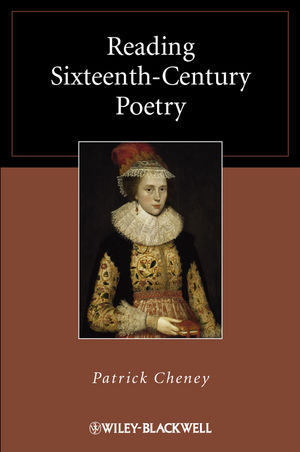Reading Sixteenth-Century PoetryISBN: 978-1-4051-6954-7
Hardcover
352 pages
May 2011, Wiley-Blackwell
 |
||||||
The Pleasures and Uses of Sixteenth-Century Poetry.
Part I 1500–1558. Reading Early Tudor Poetry: Henrician, Edwardian, Marian.
1 Voice.
The Poetic Style of Character: Plain and Eloquent Speaking.
2 Perception.
The Crisis of the Reformation, or, What the Poet Sees: Self, Beloved, God.
3 World.
The Poet’s Ecology of Place: Sky, Sea, Soil.
4 Form.
The Idea of a Poem: Elegy, Pastoral, Sonnet, Satire, Epic.
5 Career.
The Role of the Poet in Society: Skelton, Wyatt, and Surrey.
Part II 1558–1600. Reading Elizabethan Poetry.
6 Voice.
The Poetic Style of Character: From Plain Eloquence to the Metaphysical Sublime.
7 Perception.
What the Poet Sees, and the Advent of Modern Personage: Desire, Idolatry, Transport, Partnership.
8 World.
The Poet’s Ecology of Place: Cosmos, Colony, Country.
9 Form.
Fictions of Poetic Kind: Pastoral, Sonnet, Epic, Minor Epic, Hymn.
10 Career.
The Role of the Poet in Society: Whitney, Spenser, and Marlowe.
Part III A Special Case.
11 Shakespeare: Voice, Perception, World, Form, Career.
Conclusion.
Retrospective Poetry: Donne and the End of Sixteenth-Century Poetry.
Bibliography.
Index.



